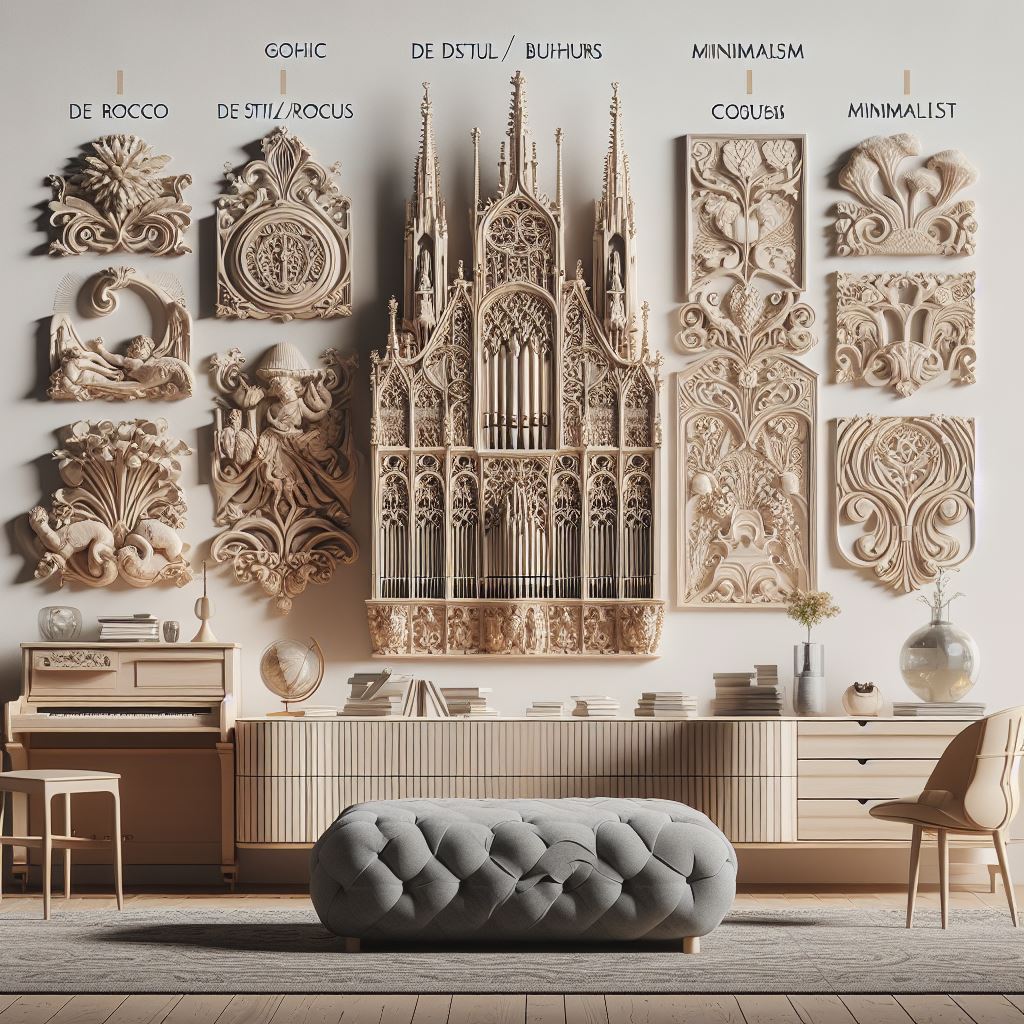ORGANIC MINIMALISM MOVEMENT IN THE WORLD & ITS REFLECTIONS ON THE FURNITURE INDUSTRY
ORGANIC MINIMALISM MOVEMENT IN THE WORLD & ITS REFLECTIONS ON THE FURNITURE INDUSTRY
Often found in bohemian designs, woven details on poufs evoke a sense of nature reflected in the product. You might be inspired by a charming straw-made lighting fixture, aiming to create a corner in your home where you feel serene, exclaiming, 'how natural.' Organic designs have such an impact on individuals because they originate from nature.
The history of furniture design is a fascinating subject. Skipping unnecessary details, let's delve into the aspects that interest us.
Gothic Design (1150-1500)
The Gothic design movement emerged during the oppressive regime of the Catholic Church, showcasing itself through high-domed roofs, devil and clergy figures wandering above people's heads on the facade, and massive metal-worked doors to allow the church to exert pressure on the public. Inside, we observe these forms in furniture, particularly in chairs. The clergy sitting in these chairs would feel themselves at the center of the world, while the public looking at the person in the chair would perceive themselves as small, oppressed, and submissive. All craftsmanship involved carving and inlay, under the control of the clergy.
Rococo Design (1740-1770)
Jumping through time in the developmental process, another important design period of interest is the Rococo era. Centuries after the Gothic period, the influence of the church had diminished, and artists had gained more freedom. Designers who retained the Gothic influences during the Baroque period, in their process of liberating themselves, used chairs with similar patterns, different textures, and even colorful and patterned wallpapers. Not stopping there, they adorned their curtains, lighting fixtures, and carpets with patterns. Going even further, they enhanced the environment with various carvings, from stair railings to all furniture. This sense of chaos suggests that designers were rebelling against the oppressive regime of 200 years ago. In this design model, we can also see the importance of carving and inlay.
De Stijl and Bauhaus Design Era (1900-1950)
Artist Mondrian, believing that artists were exaggerating and aiming for simplification, started exploring the foundations of design. In this period, the fascinating features identified as a result of his work were: There are only 3 primary colors, forms should be basic geometric shapes like lines, squares, and rectangles, and simplicity is crucial. This quest for simplification drew much attention and had a significant impact that changed the foundations of production standards. As design principles changed, so did production methods. With Bauhaus coming into play, industrial factories entered our lives!
Minimalism (1960 – ?)
As modern design evolved with technological advances, increased production resulted in production density and excessive waste. The population increased rapidly, and demand continued to rise limitlessly. On one hand, products like the Ball Chair, made from plastic molds from design methods like PopArt, contributed to the widespread 'use and throw away' culture, leading to the emergence of fragile products and various flaws in production. The common element in all these processes was the frenzy of consumption. The established fashion perception and consumer frenzy culture turned individuals into entities that exploited everything they got their hands on and instantly grew tired, throwing things aside. Trade developed, evolved, and turned into a platform where even the most inexperienced, newly entering producers strived to create marketing strategies to outshine others. During all these processes, fast, easy, and risk-free production methods were prioritized and turned into a trend. Design costs increased, and thus, the concept of minimalism slowly found its way into people's lives. In recent times, with Jute and bohemian design models also contributing to beautiful visuals and functionality, minimalist products have gained a quality suitable for any space.
Reflecting on the process up to the present:
Technology advanced
Waste increased
Design forms became more rounded, and production became more challenging
Organic forms became eye-catching, leading to a return to hand craftsmanship
Many design models are simultaneously produced and used in various geographies
All these events led to the emergence of the concept of organic minimalism in today's design.
